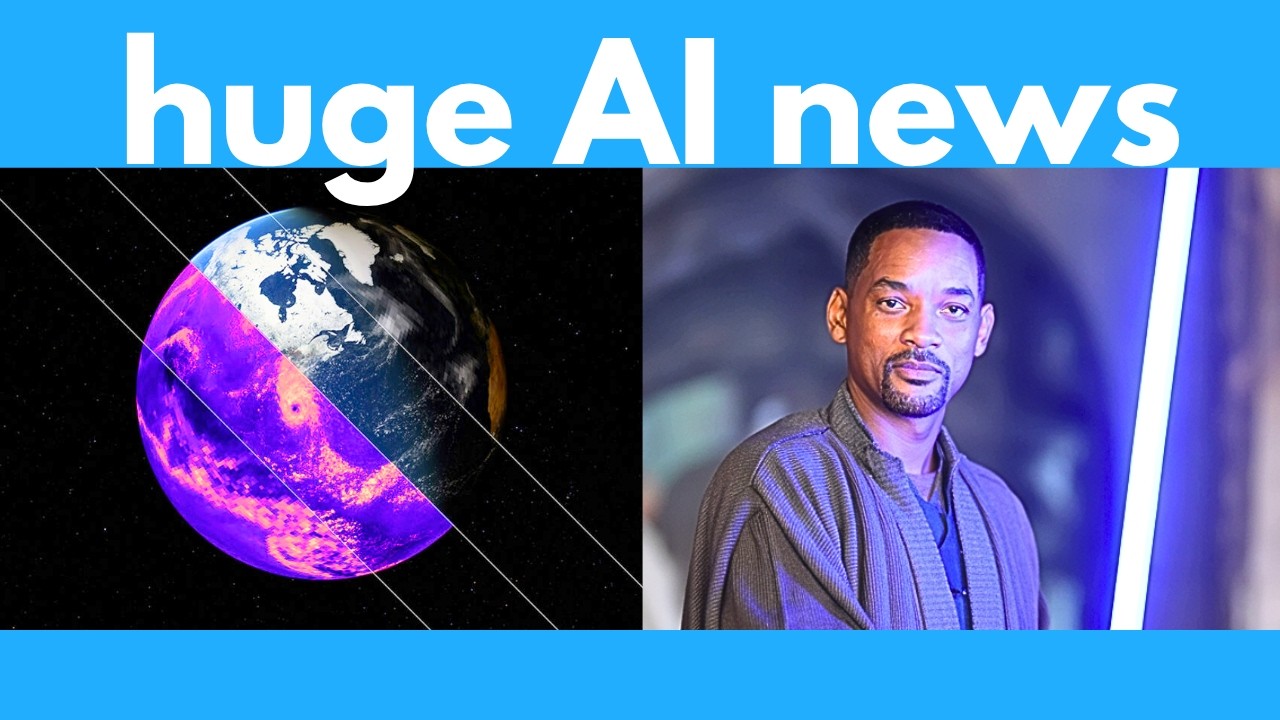This week in AI saw major advancements including Tencent’s open-source image generator X Omni and 3D world creator Hunyen World 1.0, Google’s detailed Alpha Earth digital twin, and OpenAI’s interactive ChatGPT tutor feature, alongside powerful new models from Z AI, Alibaba, and Google DeepMind. Innovations also spanned AI-generated professional videos, realistic deepfake tools, humanoid robots for automation, and Google’s Notebook LM video overview, collectively pushing the boundaries of open-source AI, multimodal content creation, and practical applications.
This week in AI has been exceptionally eventful with several groundbreaking releases across open-source models, image generation, 3D environment creation, and advanced AI features. Tencent introduced X Omni, an open-source autoregressive image generator that excels at rendering text within images, outperforming traditional diffusion models. Alongside this, Tencent also launched Hunyen World 1.0, an AI capable of generating high-resolution panoramic images and interactive 3D worlds from simple text prompts or reference images, offering promising applications in gaming and animation. Google DeepMind unveiled Alpha Earth Foundations, a highly detailed and unified AI model of planet Earth that compresses vast spatial data into a digital twin, enabling precise monitoring of environmental changes with greater accuracy and efficiency than previous methods.
OpenAI rolled out a new free “study and learn” feature within ChatGPT that acts as a guided tutor, encouraging active participation and critical thinking by asking users questions step-by-step rather than providing direct answers. This tool is designed to enhance learning and comprehension across various subjects. Meanwhile, Hera Video, an AI-powered video generator, impressed with its ability to create professional motion graphic animations from text prompts, including complex visuals like animated graphs and app interfaces, all editable within a user-friendly platform. This innovation significantly reduces the time and skill needed to produce high-quality explainer videos and commercials.
Chinese companies continue to push the boundaries of open-source AI with Z AI’s GLM 4.5 model, which boasts 335 billion parameters and outperforms many top proprietary models in reasoning, coding, and tool usage benchmarks. The model supports hybrid thinking modes for complex tasks and offers impressive demos such as interactive games and detailed presentations generated from single prompts. Alibaba also released a smaller variant of its Quen 3 model, making powerful AI more accessible for local use and fine-tuning. Google introduced Gemini 2.5 Deep Think, a closed-source model designed for deep, parallel reasoning, excelling in complex scientific and mathematical challenges, though it is currently available only to high-tier subscribers.
In the realm of image generation, Black Forest Labs released Flux One Creat, an open-source model focused on producing more natural and less polished visuals that resemble real amateur photos, addressing common AI image generation flaws. On the robotics front, Figure AI demonstrated a humanoid robot capable of performing simple laundry tasks, while Limx Dynamics showcased Limx Ollie, a versatile humanoid robot with advanced mobility and object manipulation skills suitable for logistics and warehouse automation. Additionally, Ideogram launched Ideog Character, a high-fidelity deepfake tool that can generate realistic images of a person from just one photo, surpassing previous single-image deepfake technologies in accuracy and versatility.
Finally, Google’s Notebook LM platform introduced a new video overview feature that automatically creates explainer videos with audio from uploaded documents, websites, or lecture notes. This tool transforms textual information into engaging visual and auditory content, potentially replacing traditional video summaries and enhancing learning experiences for visual and audio learners. Overall, this week’s AI advancements highlight rapid progress in open-source models, multimodal content generation, and practical AI applications, signaling exciting possibilities for developers, educators, and creators alike.
